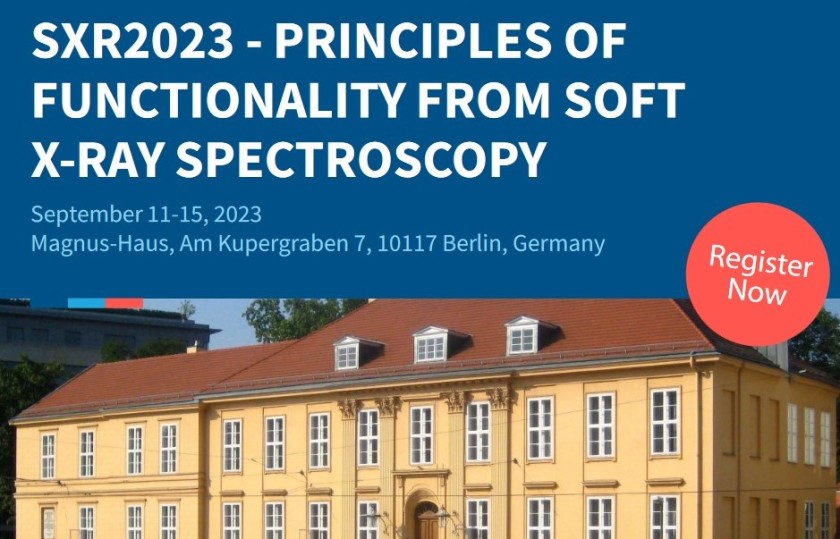SXR2023: Deadline for submissions April 15

© Jörg Zägel, CC BY-SA 3.0
The SXR2023 (Principles of Functionality from Soft-X-Ray Spectroscopy) brings together young and experienced scientists to discuss recent scientific highlights, trends, and current advances with soft X-ray spectroscopy. Our goal is to further understanding on the atomic level. The impetus is to influence and ideally shape functionality in materials and molecular systems. In this effort, scientists cross intentionally the boundaries between physics, chemistry and materials and focus on the unifying aspects of functionality. Insights to the governing principles are often based on the combination of experiment with first principles theory and models. Thus a profound description of X-ray matter interaction — creating the spectroscopic observables — is always underlying.
Registration/Abstract Submission:
The Scientific Organizing Committee invites your registration combined with abstract submissions for exclusively hot-topic oral presentations and poster contributions until April 15th, 2023, at the latest.
An e-mail notification for accepted abstracts will be sent out around the end of April 2023. Places are limited.
Please see the conference website http://www.hz-b.de/sxr2023 for more detailed information.
Please note that we cannot offer financial support regarding travels and accommodation. Instead there will be no conference fee.
red.
https://www.helmholtz-berlin.de/pubbin/news_seite?nid=24770;sprache=en
- Copy link
-
Rutger Schlatmann re-elected as ETIP PV Chair
The ETIP PV Steering Committee elected a new Chair, as well as two Vice-Chairs for the term 2024 – 2026. Rutger Schlatmann, head of the division Solar Energy at the HZB, and professor at HTW Berlin, was re-elected as the ETIP PV Chair.
-
Alternating currents for alternative computing with magnets
A new study conducted at the University of Vienna, the Max Planck Institute for Intelligent Systems in Stuttgart, and the Helmholtz Centers in Berlin and Dresden takes an important step in the challenge to miniaturize computing devices and to make them more energy-efficient. The work published in the renowned scientific journal Science Advances opens up new possibilities for creating reprogrammable magnonic circuits by exciting spin waves by alternating currents and redirecting these waves on demand. The experiments were carried out at the Maxymus beamline at BESSY II.
-
BESSY II: Heterostructures for Spintronics
Spintronic devices work with spin textures caused by quantum-physical interactions. A Spanish-German collaboration has now studied graphene-cobalt-iridium heterostructures at BESSY II. The results show how two desired quantum-physical effects reinforce each other in these heterostructures. This could lead to new spintronic devices based on these materials.
